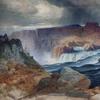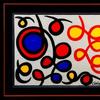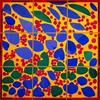Art Works from a Century of Japanese-American Cultural Exchange to be Shown at Crocker Art Museum
- SACRAMENTO, California
- /
- January 03, 2017


This February, the Crocker Art Museum will present JapanAmerica: Points of Contact, 1876 – 1970, a beautiful and diverse display of nearly 200 works of art and design that have played a role in artistic exchange between the two cultures.
Following the “opening” of Japan by the United States Navy in 1853, traveling expositions introduced communities around the world to the exquisite craftsmanship of Japanese objects, with each work affording a new insight into the Japanese way of life. Focusing on Japan’s place in major exhibitions held on the American continent from 1876 onward, and finishing with a look at the first Japanese World’s Fair in Osaka in 1970, JapanAmerica examines the influence of Japanese aesthetics on painting and printmaking, ceramics and metalwork, graphic design, advertising, bookbinding, and illustration. The show also features Japanese objects of industry that were influenced by the West, highlighting the pride that Japanese makers took in adopting Western forms and manufacturing techniques while retaining the high level of craftsmanship and detail for which they were famous.

For many Americans, the objects served as an introduction to Japanese culture, shaping their perceptions of the land and its people. At the international fairs, a culture of exchange was born. Japanese objects became the focus of admiration by Europeans and Americans alike, provoking a cult of emulation in the West and, in Japan, an important industry creating objects to appeal to Western tastes. Per the Crocker Art Museum’s chief curator, Scott A. Shields, Ph.D., the influence of Japanese art on American Artists cannot be overstated.
“This source of inspiration resulted in some of the most beautiful creations of all of American art history,” says Shields. “This exhibition is really the first of its kind, in that it showcases not only the influence that Japanese artists had on Western artists, but also the cross-pollination that occurred as American aesthetics changed Japanese production.”
In addition to art and beautiful craftwork, the works on view in JapanAmerica highlight objects of innovative industrial design, fashion, and tourism promotion, reflecting Japan’s evolving priorities relating to cultural exchange and diplomacy through the decades.
Says Shields, “We are fortunate to have so many of these pieces on view in this exhibition, which is only being shown at Cornell University and at the Crocker.”
JapanAmerica: Points of Contact, 1876 – 1970 will be on view at the Crocker Art Museum February 12 – May 21, 2017. The exhibition was organized by the Herbert F. Johnson Museum of Art, Cornell University, and is accompanied by a beautifully illustrated, 296-page scholarly catalogue.












_(17100x100_c.jpg)



